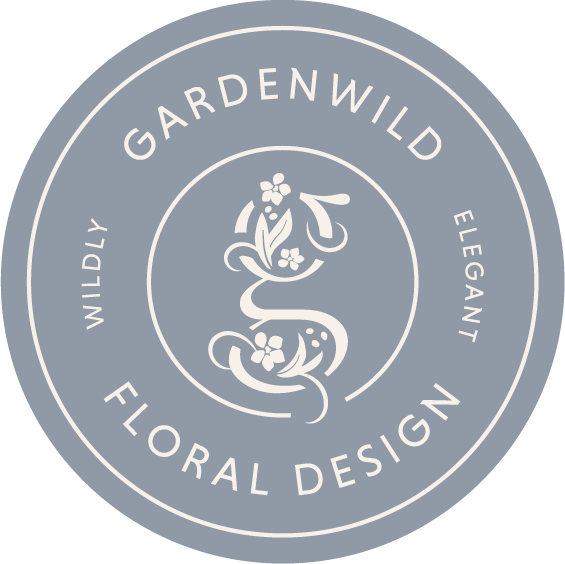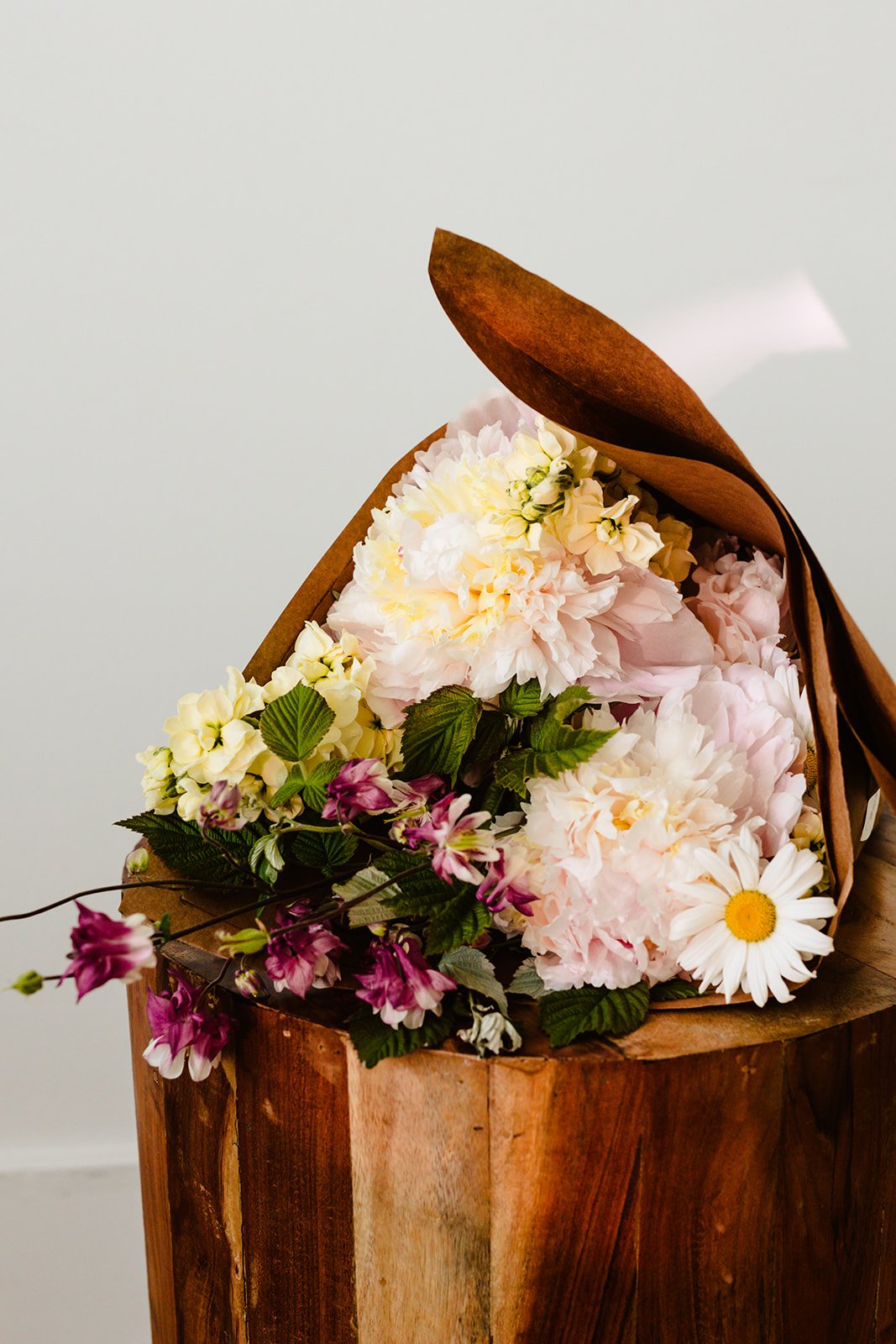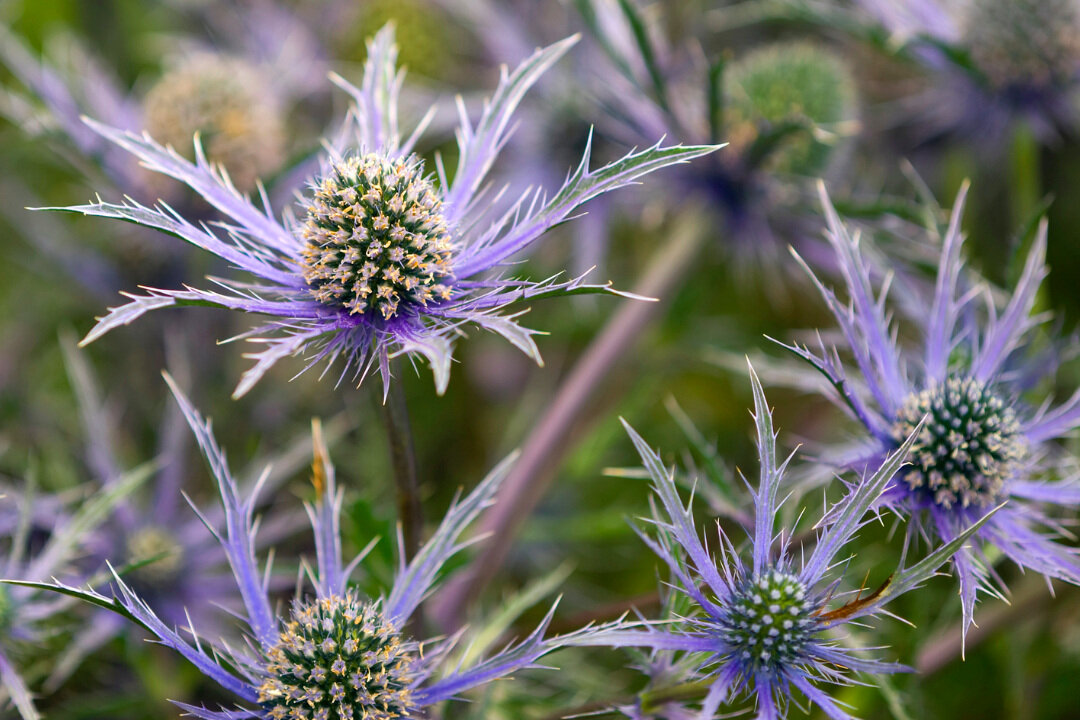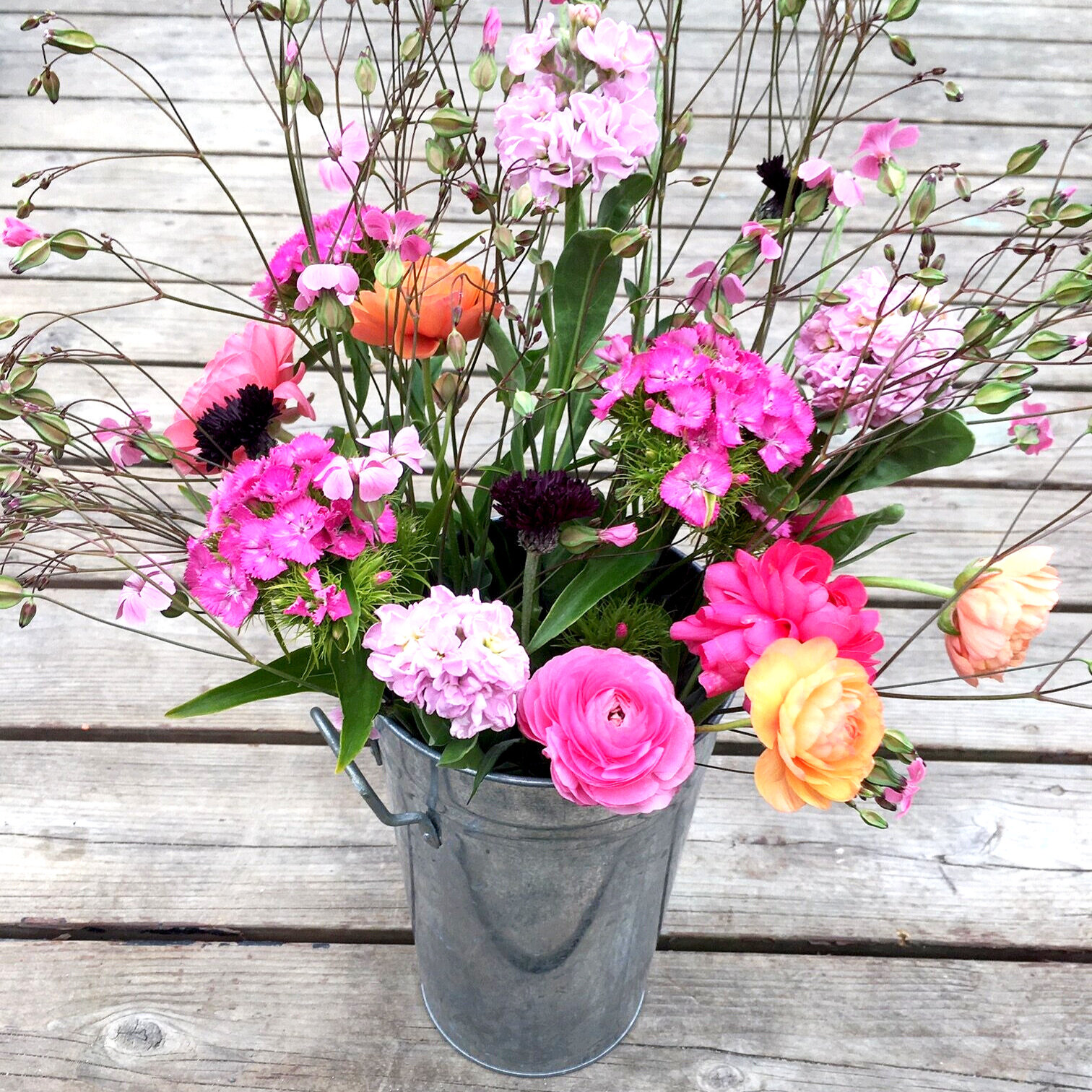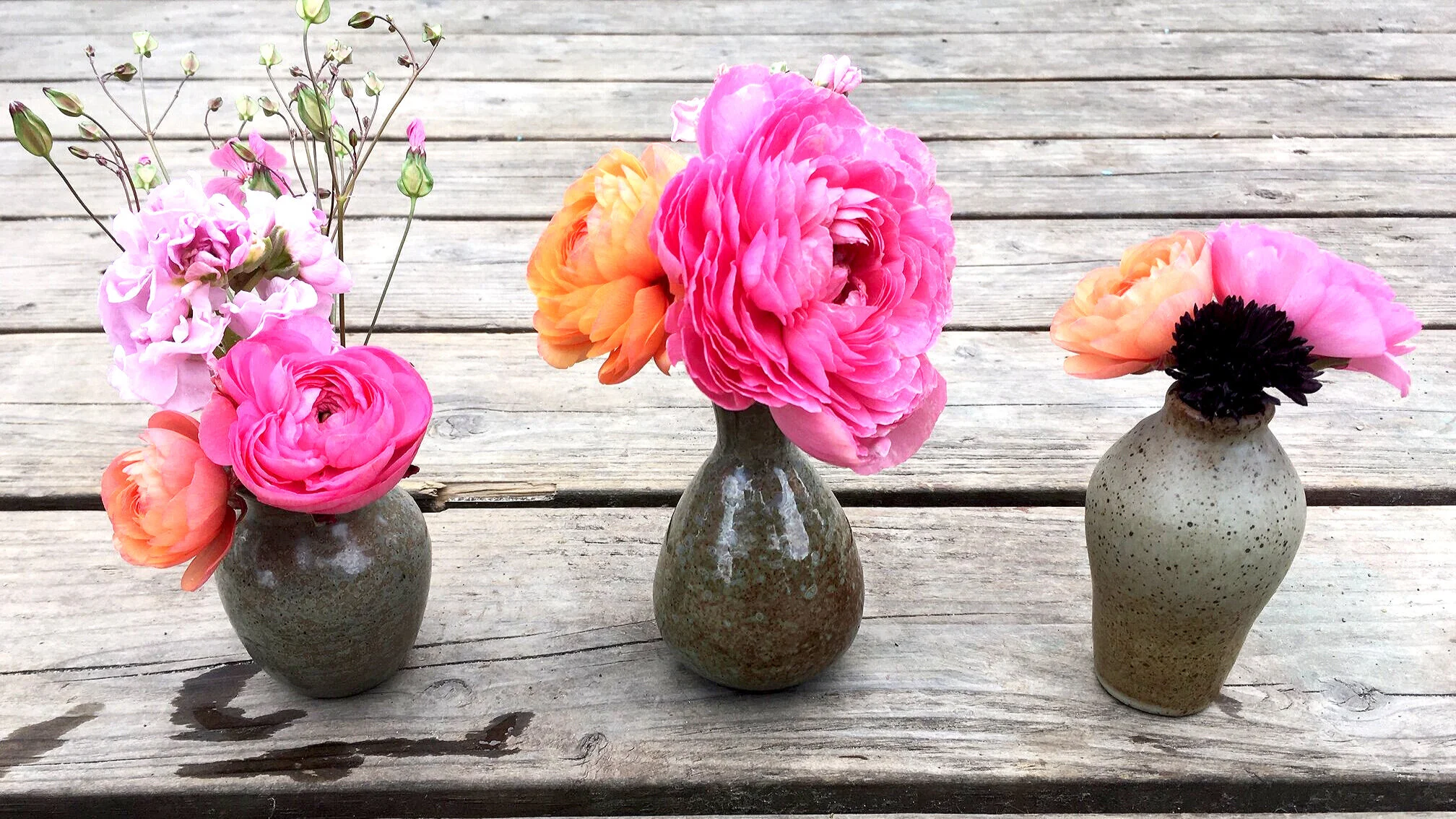8 Best Perennials for the Alaskan Cutting Garden
Here are 8 fabulous perennials for the Alaskan cut flower garden.
There are so many benefits to adding perennials to your cut flower garden.
Once established, they are super hardy.
They spread each year, leading to a greater number of stems every summer.
They often bloom earlier than annuals, thus filling the gap between spring blooming bulbs and annual flowers.
Pollinators love the early-season blooms.
Many of them are truly extra unique.
Perennials can be expensive to purchase from the nursery. But with patience and curiosity you can start most of these perennials from seed for almost nothing.
Some perennials need to be seeded a full year before they flower, but don’t be discouraged.
The best time to start a perennial by seed was last year. The next best time is this spring.
Commit to picking 3 varieties to try from the list below and grow 10 plants of each variety. You’ll have extra in case some die off OR you’ll have extra to give to your neighbor.
Columbine - Barlow Mix, Pink Petticoat and McKana Giant Mix.
Plant in the spring for flowering the following year.
After only a couple years Columbine forms a lush and full bushy plant with many stems. It is one of the earliest to bloom in the garden, which is a huge bonus for the cut flower patch.
Cut for the vase when half the florets on the stem are open. After cutting one round from a plant, watch and wait as I’ll often get a second flush of blooms a couple weeks later.
Pink Petticoat Columbine (bottom left) in an early summer Turnstone Farm bouquet.
Echinacea - There are a few varieties in different colors, just pick your favorite!
These need to be started the year before they flower. I start mine first thing in the spring, usually in week 11 or 12.
Once established, they are hardy and tall.
Harvest fresh for the vase when the petals have opened. Harvest for drying once the cone has started to turn golden.
Echinacea Cone in a Turnstone Farm Boutonniere
Eryngium - Blue Glitter and White Glitter.
Plant in week 11 or 12 for flowering the following year.
This plant gets a top score for cool looks! It has attractive thistle-like blooms with a metallic shine.
Eryngium is a hardy perennial with long, sturdy stems.
It does well in hot, sunny locations. But also tolerates a wide variety of conditions. Expect flowers during the second year of growth and in subsequent years (although mine bloomed the first year!). Great for bees, beneficial flies and wasps. Also known as plains eryngo and flat sea holly.
This is an excellent long lasting cut flower and dries well.
Blue Glitter Eryngium
Heliopsis - Burning Hearts
Sow in the early spring for flowering the following year. I start any new plantings in week 12 or 13.
These are slower to establish but offer delicate and stunning flowers.
Harvest for the vase when flowers are fully open.
Burning Hearts Heliopsis in the Turnstone Farm Garden
Monarda - Red Shades, Panorama Mix or Wild Bergamot.
Seed these in the early spring (week 12 or 13) for flowering the following year.
Monarda is a favorite for pollinators. My patch is always swarming with native pollinators and honey bees.
Plants grow tall and lush in the garden, which make a nice border for a garden room or as a living privacy screen.
Harvest when all the petals are almost fully open. Pop in a vase or hang to dry.
Red Shades Monarda (circled) in a Turnstone Farm Bouquet Subscription
Yarrow - Cloth of Gold and Summer Pastels.
Plant early in the spring for flowering the same season. I usually start a new variety in week 12 or 13.
Each year yarrow expands, so you have to be wary if you don’t want it to spread.
Yarrow is considered a “cool flower” and can withstand a light frost.
Harvest for the vase when pollen is visible on the flowers. If you cut too early, the florets will wilt. Sometimes it’s hard to get this right, so be patient! You can also harvest at this same stage and hang to dry. Yarrow dries excellent and holds its color well.
Yarrow is a fabulous perennial for the Alaskan garden
Peony - so many fabulous varieties!
While Peonies can be started from seeds, like apples, they will not be true to their parent plant.
I am going to try this in 2023 and will give you an update in a following blog.
If you’d like to try your hand at starting a NEW peony variety from seed here are the steps:
Collect seed pods from a couple of plants.
Dry the seed pods.
Once the seeds start to ripen the pods will crack open.
Prepare a space in your garden and plant the seeds in the fall. Mark them well so you know where they are in the spring.
In the spring monitor and care for the plants that have come up.
You should get your first bloom in year 3 and many more in year 4 and 5.
Since most of us don’t want to wait 5 years for a bunch of blooms, peonies are most commonly started from root stock or purchased from a nursery.
A beautiful peony in the Turnstone Farm Garden.
I hope you are now inspired to start a few new perennials by seed this year!
Cannot wait to hear about your 2023 flower gardens.
Field Notes: Week 12
Here’s what I seeded this week:
Stock - Iron Rose, Iron Apricot and Iron Yellow (I only grow the Iron varieties nowadays)
Dusty Miller - New Look (I love this stuff but it’s finicky in the vase. We’ll see how much I actually use)
Ammi - Dara
Atriplex - Copper and Red
Frosted Explosion (an amazing ornamental grass)
Statice - Blue, White, Apricot, Rosyred (new color!!)
Artemesia - Sweet Annie
Tomatoes - Sungold (my absolute favorite), Edox, Sakura, White Cherry, Chocolate Pear
Dahlias - planted the remainder of my dahlia tubers to equal 150 plants. Have some tubers left over. But my house is full.
Just about ready to transplant plants from a couple of weeks ago!
Came home from a weekend in Talkeetna to find an entire tray of seedlings all dried out!! NOOOO! Luckily they perked right up.
Half my dahlias are up and under the lights!
4 Ways to Enjoy Your Bouquet Subscription
Thank you so much to all my awesome bouquet subscribers. I couldn’t do this without you!
As a farmer, I have a lot of expenses up front: seeds, soil amendments (organic of course), labor, seed starting supplies, marketing material, etc. A lot of money goes out the door before I have even one flower blooming in the garden. EEK!
Farmers around the nation have embraced this “community supported agriculture” or “CSA” model to give them a vital cash boost when they most need it - the early spring/summer. In return the farmer gives back produce or flowers ALL SUMMER LONG or as agreed upon.
It’s a big ask for customers - to come up with a bulk payment up front and I AM SO GRATEFUL TO YOU!!
So when your much anticipated bouquet subscription starts I wanted to give you a few fun ideas for how to enjoy your flowers :)
1) Display in a classic tall vase.
If you just want a no-fuss way to display our flowers, this is for you! Get your bouquet home, fill a vase with water, re-cut the stems and place in water. Enjoy :)
Cut stems and place in a tall vase.
2) Arrange in a low vase or urn.
This will be a fun, creative process for those wanting to play a little more with arranging.
If you’re doing some extra arranging, feel free to snip a few additional stems from your yard or garden. I love adding a bit of spruce (this also adds some nice structure for the other flowers in a low vessel) or a snip of aspen. If you have other perennial foliage or flowers in your garden, don’t be afraid to cut a few! Not everything does amazing in the vase, but you don’t know until you try.
I like to start with some sturdy foliage (why I love spruce), then add some flowers (be sure to cut as short as desired). Then just keep adding flower by flower, adding foliage here and there. Don’t look for perfect! Just look for done :)
3) Disassemble and place stems into individual bud vases. It’s as easy as that.
I love putting these all over the house: in the bathroom to freshen things up, on the kitchen windowsill (although keep out of direct sun), on your bedside table (if you really want to pamper yourself), etc.
Make sure to check daily for adequate water - flowers really drink big and tiny vases can go dry in no time.
Take apart your bouquet apart and place individual stems in bud vases.
4) Float larger blooms in a shallow bowl or jar.
Cut the stems short and float large and/or double bloomed flowers in water. Flowers that do well floating include peonies, dahlias, ranunculus, roses, and large double zinnias. This is by no means an exhaustive list! Experiment :)
Larger blooms float beautifully!
There you have it!
Now I want to hear from you! How do you love to display your flowers? Comment below OR send me an email at turnstonefarm@gmail.com! Include photos :) You can also tag me on facebook or instagram @turnstonefarm.
June 15th Two Minute Garden Tour
As the days grow longer the garden is slowly coming along. Every year there is a point a few weeks after transplanting out that everything really starts to take off!
Here you can see that in the first part of the video. Most of these plants were planted over a month ago. And they’re getting huge!!
I finished planting (or at least filled all the beds) a couple weeks ago. Now I’ll just fill in as things get cut.
I had a super successful tulip harvest this year and sold every bloom through my home delivery program (and one wedding). What fun!! Thanks to EVERYONE who supported the roll out of home deliveries :) I’m planning to continue it through the summer as long as I have blooms available after my subscription customers are taken care of :)
So without further delay - here is my digital June 15th garden tour!
How I started flower farming
Want to know how all this started?! Thought it would be fun to indulge in enjoyable recollection of past events by taking you through my farming start-up years.
Read on to find out how this all began. I’ll take you back to 2013. Back to our time just outside Madison, WI. Back to a wild, homestead turned commercial farm.
But my farming actually goes back even further, to when I was a child. I’ve always had the plant-lover in me, even from a very young age. I remember insisting on having my own garden, apart from the family plot. And one of my favorite crops: strawflowers! I still grow them to this day. They remind me of being a kid and the magic of growing - from seed to flower.
My very first job was in a greenhouse. I have very fond memories of biking 10+ miles (I couldn’t yet drive) from Eagle River to Muldoon to work at the now-gone Alaska Greenhouse.
I was all set to take this passion further into college but changed course at the last minute from Sustainable Ag to Ecology and Art. In retrospect what a perfect major for a gardener. Being a gardener is part artist, part scientist, part naturalist.
Here I am with one of our laying hens. In addition to flowers we raised 200 + laying hens, turkeys, meat chickens, sheep and pigs!
But honestly I lost touch with gardening for some time and pursued other interests. It wasn’t until I found myself living in the midwest that reconnected with gardening and farming in a big way.
My husband and I moved onto a 40 acre farm in south-central Wisconsin in the summer of 2013.
This was after he worked on a variety of farms in the Madison area. And boy, does he have some wild stories to tell - from milking cows on a raw-milk dairy to holing up in a donut shop to avoid a tornado on the way to his job as manager of a vegetable CSA farm.
His love of animals and the desire to work outside was the motivator in making this farm happen. We started with a flock of 200 laying hens, pictured above on a a property we found to rent on craigslist for dirt cheap.
As a life-long gardener, I was thrilled with the opportunity to go from having my neighborhood community garden plot to having ACRES to grow.
Soon we added meat chickens, turkeys and pigs. Sheep came soon after as a means to mow the pasture on our property.
8 foot tall ragweed in the perennial flower bed :(
There was a small perennial flower garden on the property that was covered in 8 foot tall rag weed. I conned my mom to help and we practically broke our backs weeding that thing. In fact, most of the growing area on this property was covered in ragweed. We weeded and weeded and weeded.
This was my first taste at flower farming and I loved it!
A pic of our market stand. Flower bouquets and stems by the each on the right.
The following year, I planted a patch of annual flowers and grew for a flower subscription and a tiny new farmers market in Madison.
Spring planting! There’s always so much hope and potential that comes with planting. Plus sore backs and endless work.
Here’s me and my farm dog Max, netting my first bed of snapdragons.
Our son was born on the farm during that third growing season. What a joy it was to have him come into the world.
Living on a 40 acre farm, working off farm and trying to grow a family was a lot!
When our son was 8 months we made the painstaking decision to leave the farm and move back to Alaska.
This was one of the toughest decisions I’ve ever made. I’ll probably never forget Jason and I walking the rural road with our dogs running and baby in the backpack, ruminating on this decision over and over.
This picture just sings BOUNTY! You can see our turkeys in movable houses to the left. And there’s me taking stock of my zinnia bed at the height of summer.
Here’s me harvesting for market. And there’s the farmhouse in the back. Our son entered the world in that house with the help of three fabulous midwives.
After leaving the farm I knew I had to continue growing. I just had no idea how this would happen. After a hiatus from farming and growing a small home garden in our yard I discovered that people were farming in the city! Who knew?
Llewyn reaping the benefits of a small backyard garden.
I poured over google earth and online property tax info to find the dream properties in my neighborhood.
I wrote a few letters to the land owners got interest! An amazing couple was open to having me garden on their vacant lot!
And so began Turnstone Farm 2.0 - an urban flower farm. The first two years I also grew herbs and salad mix but have since decided to focus my growing strictly on flowers.
My current flower farm is a small plot on a vacant lot.
So what’s next for the farm?
I’m always looking for more land. I have my eye on a few properties in the neighborhood. And wouldn’t turn down something rural again if an opportunity came.
But more than thinking about expanding the footprint of my tiny farm, I want to 1) make a profitable business, 2) pay myself a living wage 3) grow demand for Alaskan flowers 4) make really happy customers!
The urban flower farm in full bloom.
Choosing Dahlia Varieties
I fell in love with dahlias a little reluctantly.
My first exposure to these wild and beautiful flowers was when I was landscaping for the city. I worked with the Tree and Shrub People but occasionally helped out the Flower People.
The Flower People used to fill a gigantic bed next to the performing arts center with huge (and I thought garish and gaudy) dahlias. I’m sure they were amazing but I always thought them a bit silly. I mean, I was a Tree and Shrub Person after all: practical and no nonsense (I am however often unpractical and full of nonsense).
Once I became a flower farmer I still tried to steer clear of these flowers, mainly because of my previous association with them in the city garden.
But then I saw a different side to these flowers by seeing what other folks were growing for cutting - a more delicate side.
So I cautiously bought a few tubers AND FELL IN LOVE.
I am always amazed that from a sad little tuber grows a huge lush plant that can reach 5-6 feet tall with flowers that come in all colors of the rainbow (almost). The varieties I fell in love with first were the psychadelic looking pompons or ball dahlias. After that first year I quickly started adding new varieties each year.
Now I can honestly say that I’m obsessed with dahlias. I currently have 30 varieties (and over 500 actual tubers) safely tucked in my crawlspace waiting for spring planting.
Ball dahlias: my gate-way drug to the dahlia addiction.
So how do you choose which dahlias to grow?
I, of course, love to grow for cutting.
I always want the option to go into my garden and cut a bloom for the table.
Because of this I’m not going to bother with the short varieties or any other bedding variety flowers for that matter.
If you’re just getting started with dahlias, here’s what I would recommend: buy 3-5 high quality single tubers of different varieties and colors. Or more if you have the space!
Read on to learn about a handful of dahlia types. Within each type there are many different varieties of different colors and slightly different shapes.
1) Anemone varieties like “Pooh” are super fun in the garden but a little short lived in the vase. I love these because they are so different from the traditional looking dahlia. They add true variety to the garden.
Pooh - an anemone variety. This is a super prolific bloomer. And SO CHEERY!!
2) Dinner plate dahlias have huge, luxurious blooms. You can easily fill a vase to overflowing with just a handful of these flowers. I love using these in wedding bouquets and just one in a small vase on the dinner table is ah-mazing.
Cafe au Lait Dahlia - the classic dahlia for luxurious wedding bouquets.
3) Pompon or Ball dahlias can be just a few inches in diameter. I find these the most approachable variety. They are round little balls that look stunningly perfect and rather psychedelic.
Delicate and perfect - the ball dahlia.
4) Cactus dahlias are what I think of as a little garish but they can add texture and interest to the garden. I don’t currently grow these but maybe some day I’ll warm up to their crazy look.
Cactus dahlia
And believe it or not, there are more! I thought as a starter’s-guide the above mentioned varieties would be enough to get you going.
When planning your dahlia garden, pick a color palate (if that’s your thing) or a variety of colors and add diversity and texture by getting a few anemones, a few pompons, a few dinnerplates, etc.
Go here to learn how to grow dahlias in your garden: https://www.turnstonefarmalaska.com/garden-blog/how-to-grow-dahlias
Top Three Photos that Say "Turnstone Farm"
I want to go share three photos that represent what my farm is!
Enjoy the eye candy!
This first one is the farm in full bloom! My farm is lush, and busy. I try to squeeze in as many plants as possible onto my tiny plot. Every year I try to add more. This means I have to constantly give back to my soil in the form of compost, organic fertilizers and cover crops. I have implemented no-till practices in order to keep all the micro-organisms in the soil healthy and to keep as much carbon out of the atmosphere as possible.
This second one is of my bouquet subscription bouquets. If it wasn’t for my regular bouquet customers (farmers market customers and bouquet subscribers) I wouldn’t be farming! Thank you to all who buy these bouquets and bring them into your homes. I love picturing the flowers from my garden inside your homes. Flowers on a table really do make a house a home.
This last one is a bridal bouquet from my dream customer. I love creating designs that look like they’re spilling from the garden. I colorful, I like big, I like lush, I like wild.
If I could give advice to all you brides-to-be it would be this: ditch the white and blush and go freaking rainbow! Ditch the eucalyptus collar and go fern and spruce!
Why Support Local Sustainable Floristry
What is the benefit of buying local, sustainably grown flowers? Keep reading to find out!
1) You support a local business! Purchasing from a local business keeps money in our community. Our business in turn supports other local businesses. So where does your dollar go when you purchase flowers from us? To local grocery stores, to employees that live in your neighborhood, to local banks, to our local garden stores and to other local farmers.
2) They’re freshest! Most flowers make a journey around the globe before landing on your dining room table. Since our flowers are cut right before you buy them, they will last longer in your vase without the need for chemical floral preservative.
3) Lower carbon footprint! Since we’re way up here in Alaska, most flowers in the grocery and at the flower wholesaler have traveled thousands of miles while being refrigerated. That’s a lot of energy just to bring you blooms! But our farm is RIGHT DOWN THE STREET! We can walk our flowers to the market!
4) No harmful chemicals! Most flowers you buy at the grocery have been pumped with floral preservative after harvest and doused with chemical herbicides and pesticides before harvest. Here at the farm we ONLY USE ORGANIC GROWING METHODS! This means we nurture our soil to avoid weed and pest problems. If we do have issues we only use products that fall under organic certification. After harvest we treat our blooms carefully by keeping them cool, giving them fresh water and selling them super fresh so we don’t need to use floral preservative.
5) Eco-friendly design! All our design is done foam free. Why does this matter? Floral foam is filled with nasty carcinogenic chemicals and never biodegrades. It simply breaks down in the landfill into micro-plastic compounds. What a disaster these are! Not to mention the chemicals released when handling this product. And since we don’t use a preservative in our flowers, after your event, you can compost them worry free!
6) This is my dream! By buying our product, you are supporting my dream of growing and designing flowers. Thanks SO MUCH!
I’d love a comment to let me know what YOUR DREAM is and how I can support you!
9 Great Shop-Local Mother's Day Gifts
Hoping to buy a mom something special, unique and LOCAL? Keep reading and I’ll highlight some ideas for gifts that I (and any other Anchorage mama) would LOVE to receive.
1) A massage from Nina or Helen at Open Space - for a mama who needs some great bodywork, Nina and Helen are experts.
2) Jewelry from Wolf + Rove - order online, it’s easy and fast. And her earrings are AMAZING!
3) Jewelry from Shovonne at Arctic Treasures - I just read about her in the Press and would love to support this local mama and Alaska Native artist.
4) Ice cream cone from Wild Scoops then a stroll on the Coastal Trail
5) Dinner at Jack Sprat- for a little more adventure, ride bikes on the Bird to Gird trail!
6) Dinner and an art film at Bear’s Tooth
7) Cinnamon rolls and coffee at Fire Island Rustic Bakeshop - it you haven’t checked out their new South Anchorage location, you must!
8) Our very own BOUQUET SUBSCRIPTION program from the farm! Buzz on over HERE to learn more.
9) A MARKET CARD from the farm so your mama can load up on her choice of flowers, herbs and greens all summer long. Did you say “Yes, please?” then learn more HERE!
Do you have more GREAT ideas? Share them below for all to read!

